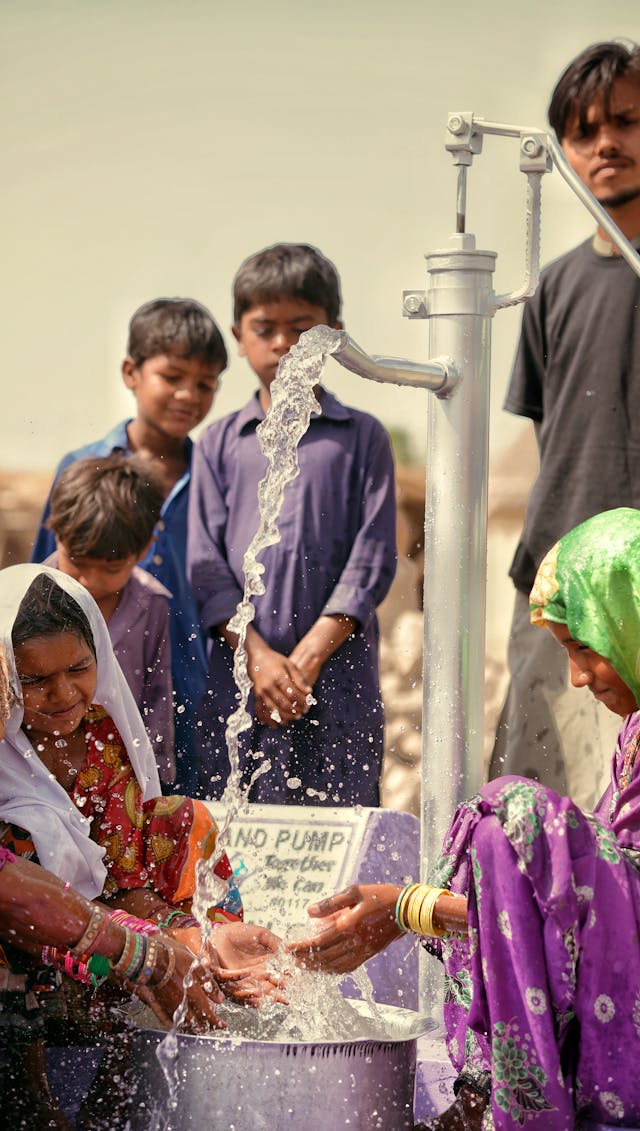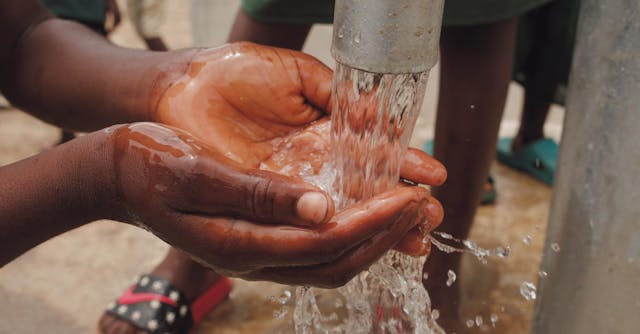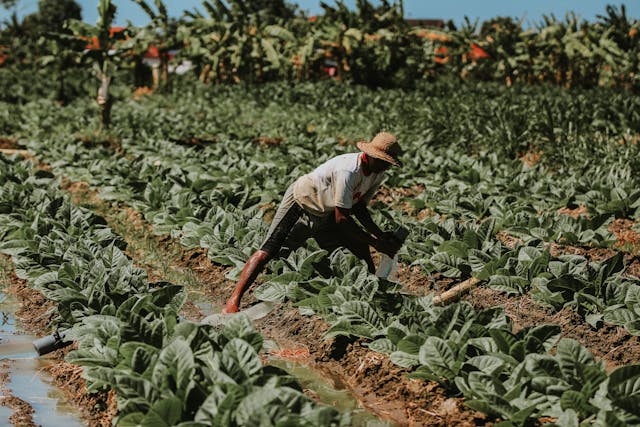Introduction
Sustainable Livelihoods in Post-Disaster Recovery is an essential course designed for humanitarian professionals, development experts, and policy makers who are engaged in recovery efforts following natural and human-made disasters. The course focuses on integrating sustainable livelihood strategies into post-disaster recovery planning to ensure that affected populations not only recover their economic activities but also thrive in a way that builds resilience and long-term development.
In the aftermath of a disaster, people lose not only their homes and belongings but also their means of livelihood, which are crucial for their economic and social stability. Recovery efforts must address these lost livelihoods by supporting individuals and communities to restore their income sources while also promoting sustainability, resilience, and self-reliance. This course will guide participants on how to design and implement sustainable livelihood programs that foster long-term recovery, build community resilience, and reduce vulnerability to future disasters.

What Are Sustainable Livelihoods in Post-Disaster Recovery?
Sustainable livelihoods in post-disaster recovery refer to strategies and programs designed to restore and diversify the income-generating activities of disaster-affected populations while ensuring environmental, social, and economic sustainability. The approach focuses on rebuilding not just the immediate physical assets that were lost but also on enhancing the capacity of individuals and communities to adapt and thrive in the face of future shocks.
Key aspects of sustainable livelihoods include:
- Diversification of income sources: Ensuring that people are not reliant on a single source of income.
- Capacity building: Providing individuals with skills and resources that enable them to adapt to changing circumstances.
- Environmental sustainability: Ensuring that livelihood activities do not degrade the natural environment.
- Resilience: Fostering the ability of individuals and communities to withstand future disasters and crises.
Sustainable livelihoods are grounded in a holistic and participatory approach, ensuring that recovery strategies are tailored to the needs and resources of local communities and involve all stakeholders.
Course Objectives
By the end of this course, participants will:
- Understand the principles of sustainable livelihoods and how they apply to post-disaster recovery.
- Learn how to assess livelihood needs in disaster-affected areas and design livelihood recovery strategies that foster long-term resilience.
- Develop skills and capacity-building programs that address both immediate recovery and long-term development.
- Gain knowledge of environmentally sustainable livelihoods and the importance of natural resource management in recovery.
- Learn how to integrate gender, social inclusion, and vulnerable groups in livelihood recovery programs.
- Understand how to create community-based interventions and involve affected populations in decision-making and program implementation.
- Learn how to monitor and evaluate the effectiveness of livelihood recovery programs and adapt strategies based on lessons learned.
Why Sustainable Livelihoods Matter in Post-Disaster Recovery
Restoring Economic Stability
In the wake of a disaster, livelihoods are often the first thing to be lost. Restoring economic stability is essential to help individuals and families regain their sense of normalcy. A focus on sustainable livelihoods ensures that recovery efforts go beyond temporary aid and create long-lasting economic opportunities that can support communities for years to come.
Building Resilience
Disasters are often a recurring feature in many regions. A sustainable livelihood approach helps communities build the resilience needed to withstand future disasters. By diversifying income sources, promoting climate-smart agriculture, and improving access to basic services, communities can reduce their vulnerability and enhance their ability to recover from future crises.
Fostering Social and Economic Inclusion
The principles of social inclusion and equality are vital to the success of livelihood recovery programs. In post-disaster contexts, vulnerable groups—such as women, children, people with disabilities, and ethnic minorities—are often disproportionately affected. Livelihood recovery strategies must ensure that these groups have equal access to recovery opportunities, thereby promoting social cohesion and equity within affected communities.
Environmental Sustainability
In many cases, disasters result in environmental degradation, which further exacerbates the vulnerability of affected populations. Sustainable livelihoods programs should emphasize environmental restoration, resource conservation, and sustainable agricultural practices to ensure that recovery efforts do not further damage the environment but instead contribute to long-term environmental health.
Core Components of Sustainable Livelihoods in Post-Disaster Recovery
1. Livelihood Assessment and Needs Analysis
Before implementing any recovery interventions, it is essential to assess the livelihood needs of the affected population. This involves understanding the existing livelihood strategies of the community, the impacts of the disaster on these livelihoods, and identifying vulnerable groups that may require special assistance. Key steps include:
- Conducting community consultations and participatory assessments.
- Mapping existing livelihoods and identifying key vulnerabilities.
- Analyzing the impact of the disaster on both local resources (e.g., land, water) and the economy.
- Understanding the capacity of local markets and the availability of resources for recovery.
2. Diversification of Income Sources
In many disaster-affected areas, populations rely on a single source of income, which leaves them vulnerable to future shocks. Livelihood recovery programs should focus on income diversification, which may include:
- Vocational training: Offering skills training that enables individuals to pursue alternative income-generating activities.
- Small business development: Providing support for the creation of small businesses or cooperatives.
- Access to finance: Facilitating microloans, grants, or savings groups to help individuals invest in income-generating activities.
- Agricultural diversification: Supporting farmers to diversify their crops and incorporate climate-resilient practices.
3. Capacity Building and Skills Development
Building the capacity of local populations is key to ensuring long-term recovery and resilience. This section will explore:
- Skills training in areas such as agriculture, small business development, and technology.
- Entrepreneurship training to enable individuals to create their own businesses.
- Developing financial literacy and management skills to help individuals manage their resources effectively.
- Fostering local leadership by training individuals to take on roles in recovery planning and implementation.
4. Integrating Environmental Sustainability
Humanitarian recovery efforts must consider the environmental impact of recovery activities. This involves:
- Promoting sustainable agriculture and agroforestry to reduce environmental degradation.
- Incorporating natural resource management practices, such as water conservation, soil health improvement, and waste management.
- Supporting green livelihoods, such as renewable energy or eco-tourism, that contribute to both recovery and environmental sustainability.
- Ensuring that the recovery process does not exacerbate the environmental factors that led to the disaster.
5. Gender and Social Inclusion in Livelihoods
To ensure that recovery programs are equitable and inclusive, it is essential to integrate gender equality and social inclusion into livelihood strategies. This includes:
- Gender-sensitive livelihoods programs that address the specific needs of women, such as access to finance, skills training, and property rights.
- Promoting the empowerment of women and marginalized groups through leadership opportunities and equal access to recovery programs.
- Ensuring that livelihoods programs do not unintentionally perpetuate gender-based violence or exclusion.
- Providing support for vulnerable groups such as the elderly, people with disabilities, and ethnic minorities.
6. Monitoring and Evaluation of Livelihood Programs
Ongoing monitoring and evaluation are crucial to ensure that livelihood programs are effective and adaptable. This module will cover:
- Developing monitoring systems to track the progress of livelihood recovery programs.
- Evaluating the impact of livelihood programs on communities, income levels, and resilience.
- Gathering community feedback to adjust strategies and improve outcomes.
- Ensuring that programs are flexible and able to adjust to changing needs and conditions during recovery.
You may also be interested in other courses in the Humanitarian and International Development
Challenges in Sustainable Livelihoods for Post-Disaster Recovery
Limited Resources
In the aftermath of a disaster, resources for recovery are often limited. Ensuring that limited funds are used efficiently while maximizing impact is one of the most significant challenges in livelihood recovery. Participants will learn strategies for:
- Prioritizing interventions based on needs assessments and available resources.
- Leveraging partnerships with local and international stakeholders to mobilize resources.
- Designing low-cost, high-impact solutions that are scalable and adaptable.

Political and Institutional Barriers
Disasters often expose political and institutional challenges that can hinder recovery efforts. This section will cover:
- How to navigate local politics and ensure that recovery efforts benefit the most vulnerable.
- Addressing institutional weaknesses and coordination challenges in the recovery process.
- Engaging government agencies, local institutions, and the private sector in recovery planning.
Long-Term Sustainability
Ensuring that recovery programs are not just short-term fixes but contribute to long-term sustainability is a critical challenge. This module will explore:
- Building self-reliance in affected communities to reduce dependency on external aid.
- Integrating economic development and resilience-building into the recovery process.
- Ensuring that livelihood programs remain relevant and effective over time, even as circumstances change.
Who Should Attend
This course is ideal for:

- Humanitarian professionals involved in disaster response, recovery, and development.
- Program managers and coordinators working on livelihood recovery projects.
- NGO leaders, donors, and policy makers focused on post-disaster recovery.
- Development experts interested in sustainable recovery practices.
- Social entrepreneurs and community leaders looking to build sustainable livelihoods.
Methodology
This course combines lectures, case studies, interactive discussions, and practical workshops to provide participants with the tools and techniques required for successful livelihood recovery:
- Expert-led sessions on sustainable livelihoods and disaster recovery.
- Group exercises to develop strategies for real-world scenarios.
- Case study analysis of successful livelihood recovery efforts.
- Hands-on tools for designing and monitoring livelihood programs.
Outcome for the Course Sponsor
By sponsoring this course, your organization will enhance its capacity to lead sustainable livelihood recovery efforts, contributing to long-term community resilience and economic recovery. Sponsors will benefit from:
- Improved project management and resource mobilization skills for livelihood recovery.
- Better coordination between humanitarian organizations and local stakeholders.
- Sustainable recovery models that promote long-term development and self-reliance.









